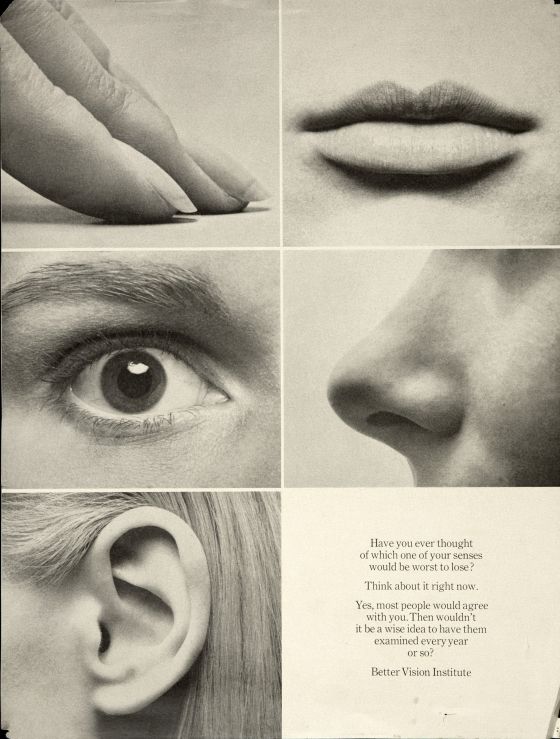ピグマリオン効果:期待が未来を創る
ピグマリオン効果は、他者からの期待が、その期待に応えようとする行動を引き出し、結果としてパフォーマンスを向上させる現象を指します。ローゼンタールの実験では、教師が特定の生徒に期待を寄せると、その期待に応えようと生徒自身が努力し、実際に成績が向上しました。これは、教師が期待する生徒に対して、より多くの関心を払い、積極的なフィードバックを与え、学習意欲を高めるような働きかけをした結果だと考えられます。
この効果は、教育現場だけでなく、職場や家庭など、あらゆる人間関係に当てはまります。上司が部下に期待を寄せれば、部下は期待に応えようと努力し、より良い成果を出す可能性が高まります。親が子供に期待をかければ、子供は自信を持ち、自己肯定感を高め、能力を最大限に発揮できるかもしれません。
ピグマリオン効果は、私たちが他者からどのように見られているか、そしてどのような期待を寄せられているかによって、私たちの行動やパフォーマンスが大きく影響を受けることを示しています。
ピグマリオン効果を活かすポイント
ピグマリオン効果を効果的に活用するためには、以下のポイントを押さえることが重要です。
- 具体的な期待を伝える:漠然とした期待ではなく、「このプロジェクトを成功させるために、あなたのリーダーシップに期待している」など、具体的な期待を伝えることで、相手は目標を明確に認識し、行動を起こしやすくなります。
- ポジティブなフィードバックを与える:相手の努力や成果を認め、ポジティブなフィードバックを与えることで、自己効力感を高め、さらなる成長を促すことができます。
- 継続的なサポートを提供する:相手が困難に直面したときには、適切なサポートを提供することで、モチベーションを維持し、目標達成に向けて前進することができます。
ピグマリオン効果は、他者への期待が、その人の可能性を引き出し、成長を促す力を持つことを示しています。私たちは、周囲の人々にポジティブな期待を寄せ、彼らの可能性を信じることが大切です。そうすることで、私たちは、より良い人間関係を築き、お互いを高め合いながら、共に成長していくことができるでしょう。
ホーソン効果:注目されることで生まれる力
ホーソン効果は、ピグマリオン効果とは少し異なり、注目されること自体が、人の行動やパフォーマンスに影響を与える現象を指します。ホーソン工場での実験では、労働環境の変化よりも、研究者からの注目や関心によって、従業員の生産性が向上しました。これは、注目されることで、人は自分が評価されていると感じ、より良い成果を出そうと努力する心理が働くためだと考えられます。
ホーソン効果は、ピグマリオン効果と同様に、教育現場、職場、家庭など、様々な場面で観察されます。例えば、教師が特定の生徒に注目し、積極的に関わることで、その生徒は学習意欲を高め、成績を向上させる可能性があります。上司が部下の仕事ぶりを評価し、感謝の言葉を伝えることで、部下はモチベーションを高め、より良いパフォーマンスを発揮するかもしれません。
ホーソン効果は、私たちが他人からどのように見られているか、そしてどのような関心を寄せられているかによって、私たちの行動やパフォーマンスが大きく影響を受けることを示しています。
ホーソン効果を活かすポイント
ホーソン効果を効果的に活用するためには、以下のポイントを押さえることが重要です。
- 積極的な関心を示す:相手の話を真剣に聞き、共感する姿勢を示すことで、相手は自分が大切にされていると感じ、安心感を得ることができます。
- 努力や成果を認める:些細な努力や成果でも、それを認め、感謝の言葉を伝えることで、相手は自己肯定感を高め、さらなる努力を続けることができます。
- 継続的なコミュニケーションを図る:定期的にコミュニケーションを図り、相手の状況や気持ちを理解することで、信頼関係を築き、相手をサポートすることができます。
ホーソン効果は、注目されること、そして関心を寄せられることが、人のモチベーションを高め、成長を促す力を持つことを示しています。私たちは、周囲の人々に積極的に関心を示し、彼らの存在を認めることが大切です。そうすることで、私たちは、より良い人間関係を築き、お互いを励まし合いながら、共に成長していくことができるでしょう。
ピグマリオン効果とホーソン効果:相互作用が生み出す力
ピグマリオン効果とホーソン効果は、それぞれ独立した現象ですが、実際には相互に作用し合い、より大きな影響力を発揮することがあります。例えば、教師が生徒に期待を寄せ、積極的に関わることで、生徒は期待に応えようと努力し、注目されていると感じ、さらにモチベーションを高める可能性があります。
この相互作用は、職場や家庭でも同様です。上司が部下に期待を寄せ、積極的にコミュニケーションを図ることで、部下は期待に応えようと努力し、評価されていると感じ、さらに良い成果を出す可能性があります。親が子供に期待を寄せ、愛情を持って接することで、子供は期待に応えようと努力し、愛されていると感じ、さらに成長する可能性があります。
ピグマリオン効果とホーソン効果は、私たちが他者とどのように関わり、どのような影響を与え合うかによって、お互いの可能性を引き出し、成長を促す力を持つことを示しています。私たちは、周囲の人々にポジティブな期待を寄せ、積極的に関心を示すことが大切です。そうすることで、私たちは、より良い人間関係を築き、お互いを高め合いながら、共に成長していくことができるでしょう。
The Pygmalion Effect: Expectations Shape Reality
The Pygmalion Effect refers to the phenomenon where higher expectations placed on someone lead to an increase in their performance. In Rosenthal’s experiment, teachers were given a list of students expected to show academic growth, although the list was randomly generated. Surprisingly, these students did indeed improve their performance. This is attributed to the teachers’ altered behavior towards these students, driven by their expectations. They likely provided more attention, positive feedback, and encouragement, fostering a learning environment that motivated the students to succeed.
This effect extends beyond education, impacting workplaces and homes. When a supervisor sets high expectations for their subordinates, it can encourage them to strive for excellence. Similarly, when parents believe in their children’s potential, it can boost their confidence and self-esteem, enabling them to reach their full potential.
The Pygmalion Effect highlights the profound impact of others’ perceptions and expectations on our actions and performance.
Harnessing the Pygmalion Effect
To effectively utilize the Pygmalion Effect, consider the following points:
- Communicate Specific Expectations: Instead of vague expectations, convey clear goals, such as, “I’m counting on your leadership to make this project a success.” This provides a clear target for the individual to work towards.
- Provide Positive Feedback: Acknowledge their efforts and achievements with positive feedback, reinforcing their self-efficacy and encouraging further growth.
- Offer Continuous Support: When they encounter challenges, offer appropriate support to maintain their motivation and help them progress towards their goals.
The Pygmalion Effect demonstrates the power of positive expectations in unlocking a person’s potential and fostering growth. It’s crucial to believe in the abilities of those around us and express our positive expectations. By doing so, we create supportive relationships where everyone can thrive and grow together.
The Hawthorne Effect: The Power of Attention
The Hawthorne Effect differs slightly from the Pygmalion Effect, focusing on how the mere act of being observed can influence behavior and performance. In the Hawthorne Works experiments, worker productivity increased not due to changes in the working conditions, but because of the attention they received from the researchers. This suggests that when people feel valued and observed, they are more likely to strive for better results.
Like the Pygmalion Effect, the Hawthorne Effect is observed in various settings. Teachers who show genuine interest in specific students can spark their enthusiasm for learning and improve their academic performance. Supervisors who express appreciation for their subordinates’ work can boost their morale and productivity.
The Hawthorne Effect underscores the significance of feeling seen and acknowledged, and how it can significantly impact our actions and performance.
Utilizing the Hawthorne Effect
To effectively leverage the Hawthorne Effect, keep these points in mind:
- Show Genuine Interest: Actively listen to others and express empathy, making them feel valued and understood.
- Acknowledge Efforts and Achievements: Recognize even small efforts and accomplishments with words of appreciation, boosting their self-esteem and encouraging them to continue their efforts.
- Maintain Regular Communication: Engage in consistent communication to understand their needs and concerns, building trust and providing support.
The Hawthorne Effect reveals the motivational power of attention and recognition. It’s important to actively engage with those around us and acknowledge their presence. This fosters positive relationships where individuals feel encouraged and supported to grow.
The Pygmalion and Hawthorne Effects: A Synergistic Force
While the Pygmalion and Hawthorne Effects are distinct phenomena, they often interact and create an even more substantial impact. For instance, a teacher who combines high expectations with active engagement can inspire students to strive for excellence while feeling valued and motivated.
This synergy is also evident in workplaces and homes. A supervisor who expresses both high expectations and genuine interest in their subordinates can foster a motivated and productive team. Parents who express both belief in their children’s potential and unconditional love can nurture confident and capable individuals.
The Pygmalion and Hawthorne Effects demonstrate the transformative power of positive expectations and genuine attention. By combining these two forces, we can create environments where individuals feel empowered to reach their full potential and thrive. It’s essential to believe in the abilities of those around us, express our positive expectations, and actively engage with them. By doing so, we cultivate positive relationships that foster growth and mutual support, enabling everyone to flourish.











